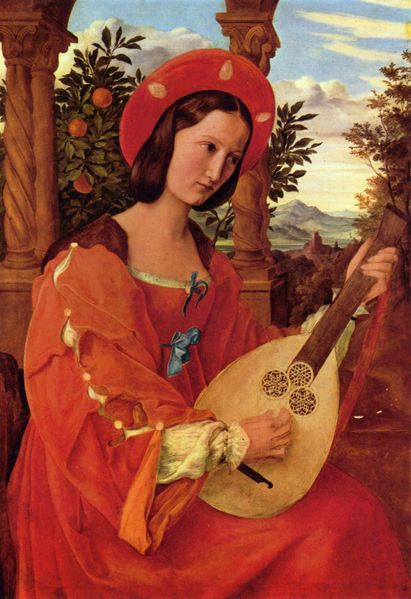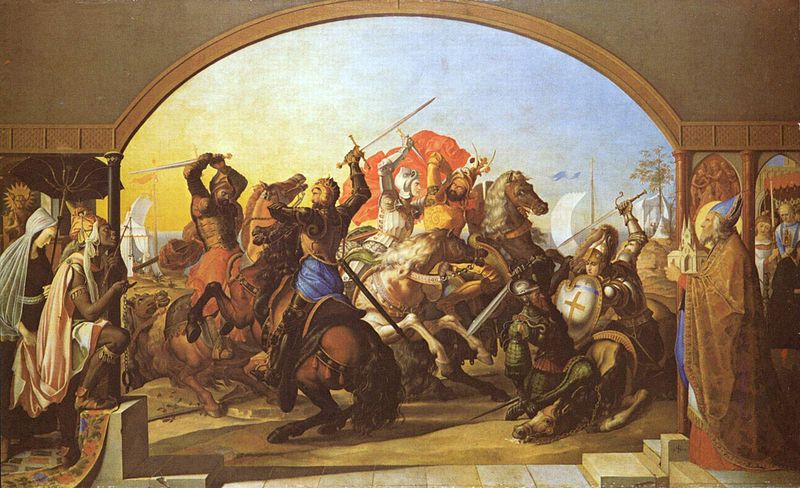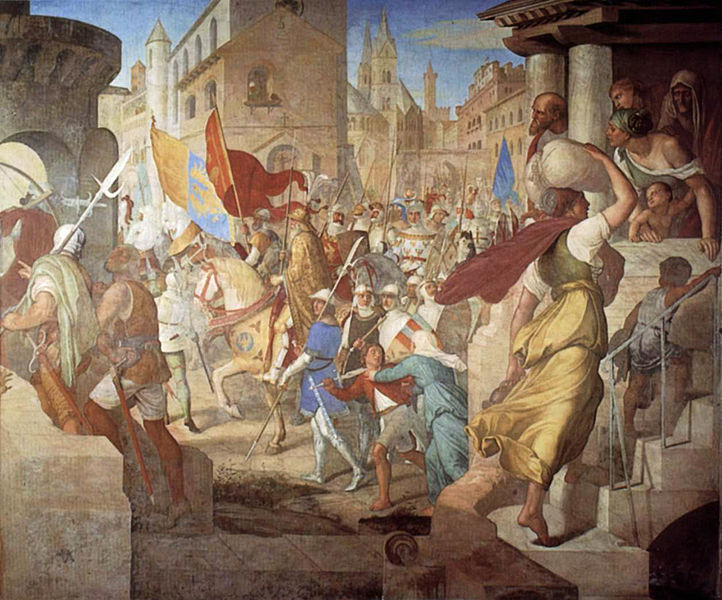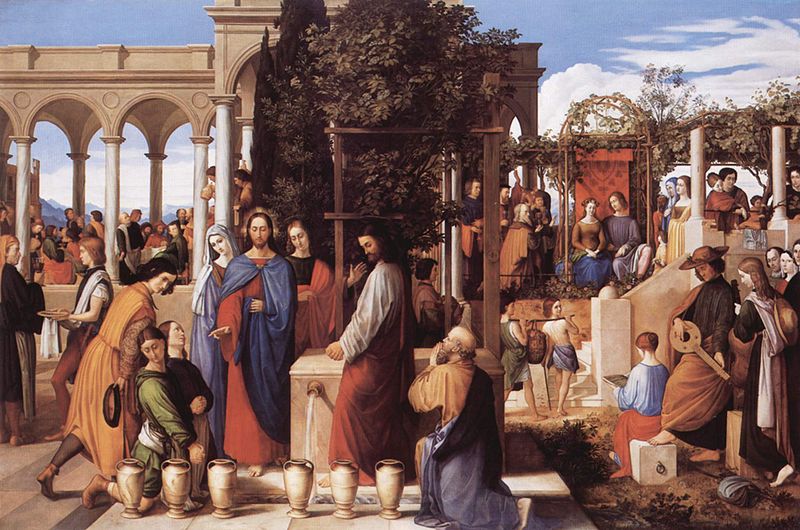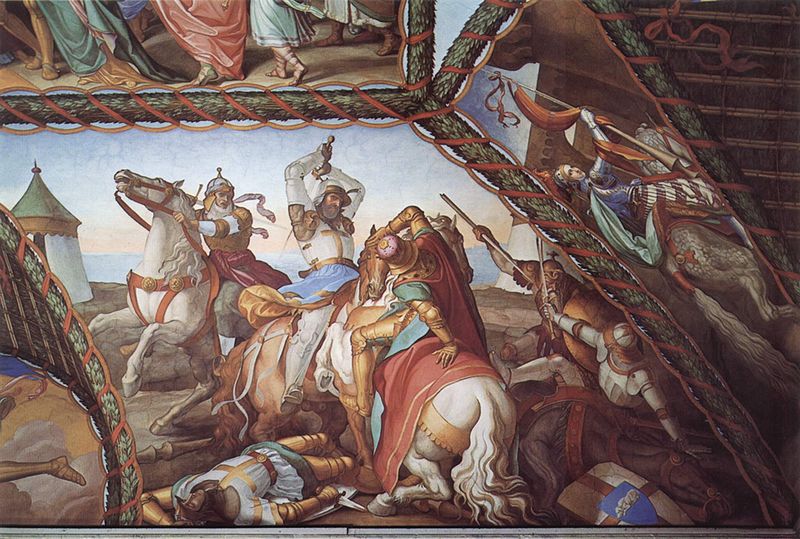<Back to Index>
- Painter Julius Schnorr von Carolsfeld, 1794
PAGE SPONSOR
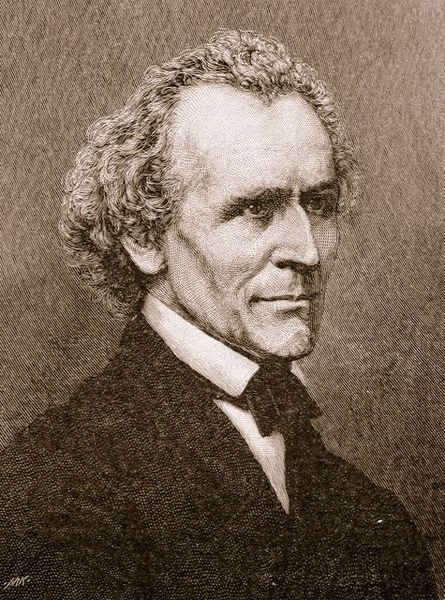
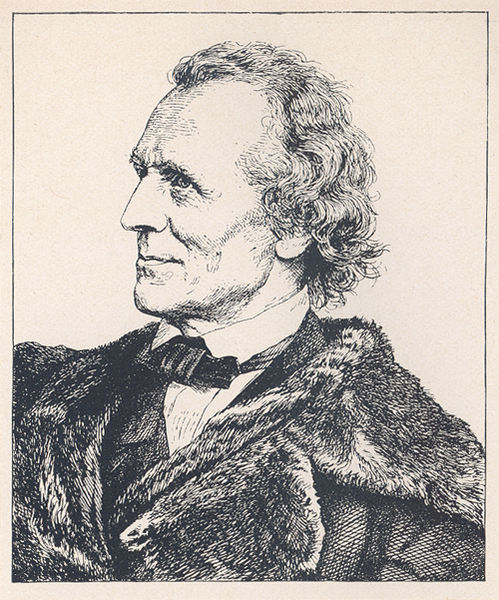
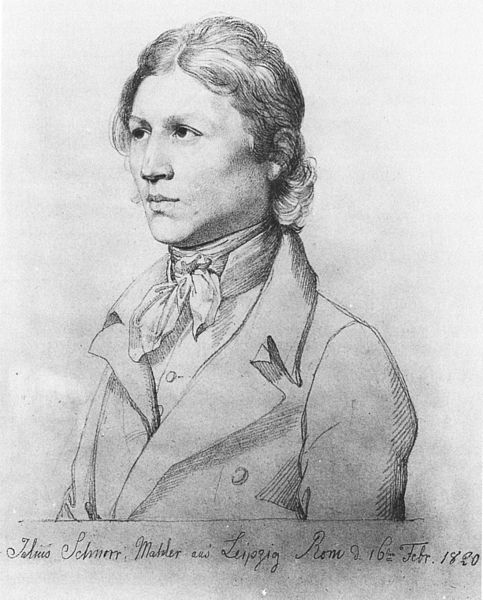
Julius Schnorr von Carolsfeld (26 March 1794 – 24 May 1872) was a German painter.
Schnorr was born at Leipzig to Johann Veit Schnorr (1764 – 1841), a drafttsman, engraver and painter. His father provided young Julius his first instruction in art. At seventeen he entered the Vienna Academy, from which Johann Friedrich Overbeck and others who rebelled against the old conventional style had been expelled about a year before.
Schnorr followed the founders of the new artistic brotherhood, the Nazarene movement, in their pilgrimage to Rome in 1815. This school of religious and romantic art tended to reject modern styles, and reverted to and revived the principles and practice of earlier periods. At the outset an effort was made to recover fresco painting and monumental art, and Schnorr found opportunity of proving his powers, when commissioned to decorate with frescoes, illustrative of Ariosto, the entrance hail of the Villa Massimo, near the Lateran. His fellow laborers were Cornelius, Overbeck and Veit.
The second artistic period of Schorr's output dates from 1825, when he left Rome, settled in Munich, entered the service of King Ludwig, and transplanted to Germany the art of wall painting which he had learned in Italy. He showed himself qualified as a sort of poet - painter to the Bavarian court; he organized a staff of trained helpers, and covered five halls in the new palace with frescoes illustrative of the Nibelungenlied. He also created scenes from the histories of Charlemagne, Frederick Barbarossa and Rudolph of Habsburg. Critics considered these compositions to be creative, learned in composition, masterly in drawing, but also exaggerated in thought and extravagant in style.
Schnorr's third period is marked by his Biblical illustrations. He was a Lutheran, and took a broad and un-sectarian view. An 1851 visit to London generated a commission for a Picture Bible, for which he created over 200 woodcuts. While in London he also received a commission to design many of the glass windows for the St. Paul's Cathedral (the windows were manufactured in the royal foundry in Munich).
The Picture Bible illustrations were often complex and cluttered; some critics found them wanting in harmony of line and symmetry, judging them to be inferior to similar work produced by Raphael for his Bible. His style differs from the simplicity and severity of earlier times, exhibiting instead the florid resplendence of the later Renaissance.
Biblical drawings and cartoons for frescoes formed a natural prelude to designs for church windows. The painter's renown in Germany secured commissions in Great Britain. Schnorr made designs, carried out in the royal factory, Munich, for windows in Glasgow cathedral and in St Paul's Cathedral, London. This Munich glass provoked controversy: medievalists objected to its want of luster, and stigmatized the windows as colored blinds and picture transparencies. But the opposing party claimed for these modern revivals the union of the severe and excellent drawing of early Florentine oil paintings with the coloring and arrangement of the glass paintings of the latter half of the 16th century.
Schnorr's son Ludwig Schnorr von Carolsfeld was an operatic tenor whose life was cut short by an unexpected and fatal illness at age 24. He had just begun to gain renown as the first to sing Wagner's Tristan; he only completed four public performances before his death. Schorr's brother, Ludwig Ferdinant (1789 - 1853) was a painter.
Julius Schnorr von Carolsfeld died in Munich in 1872.
